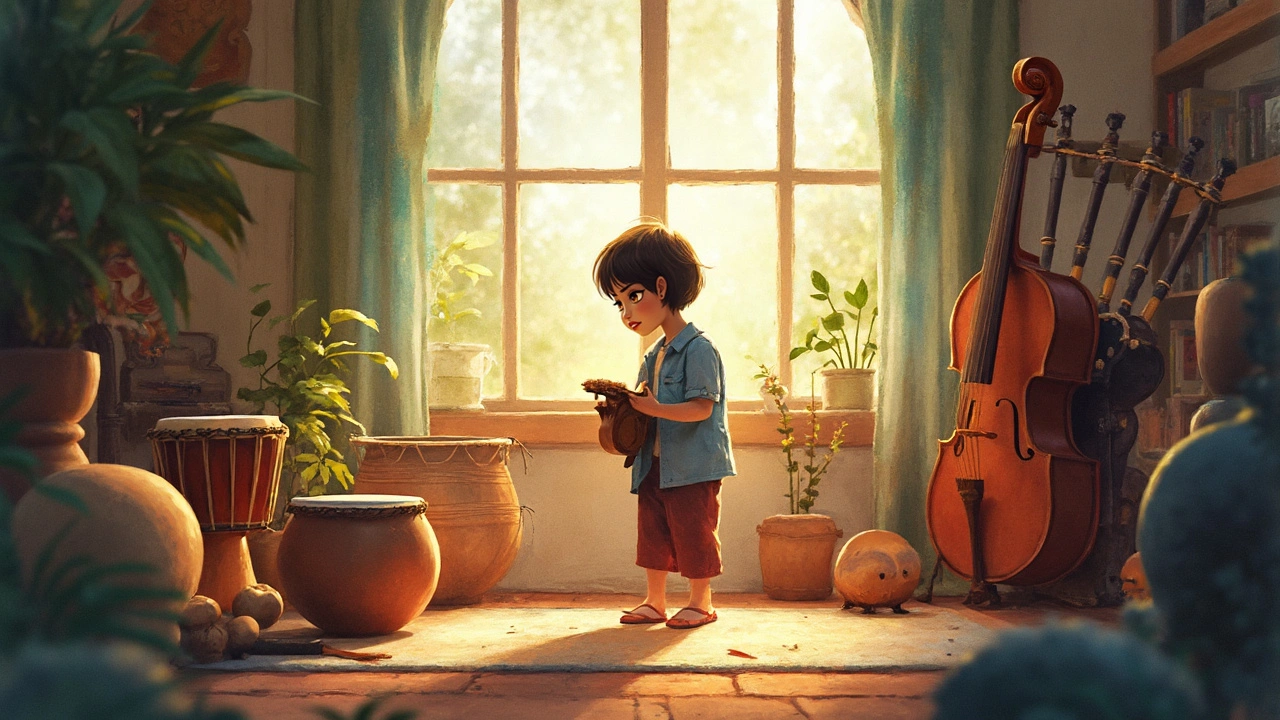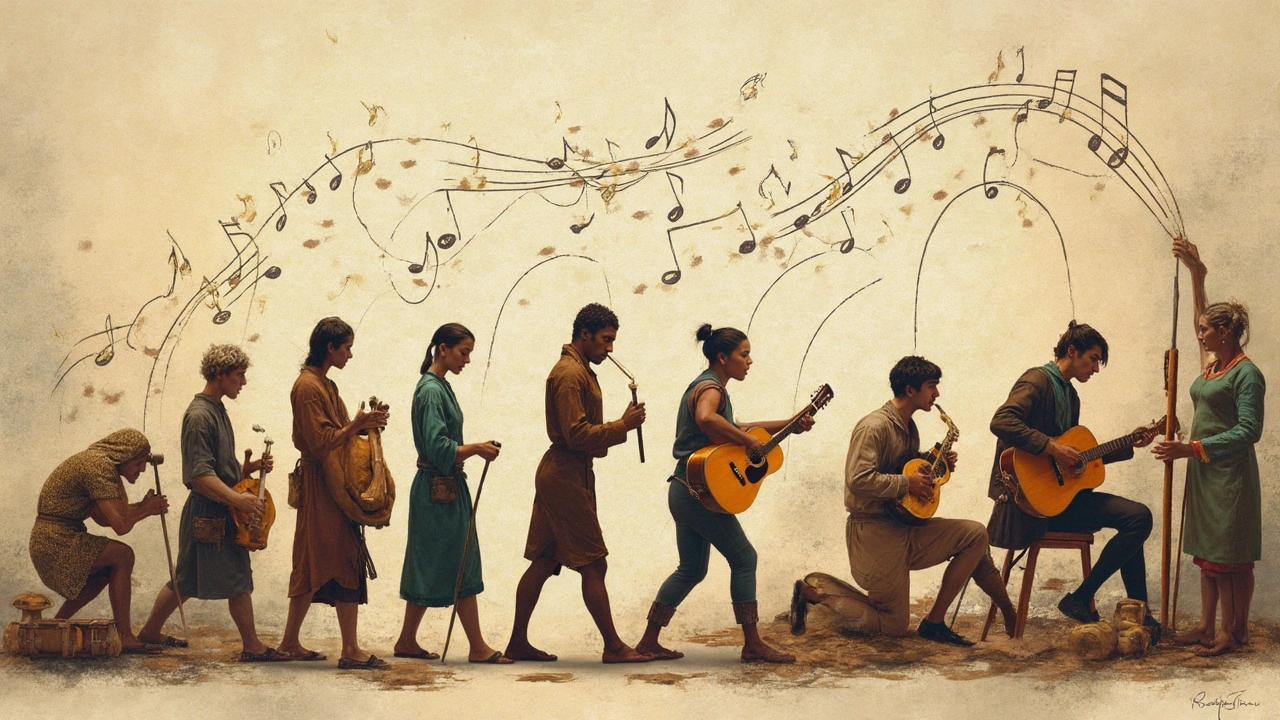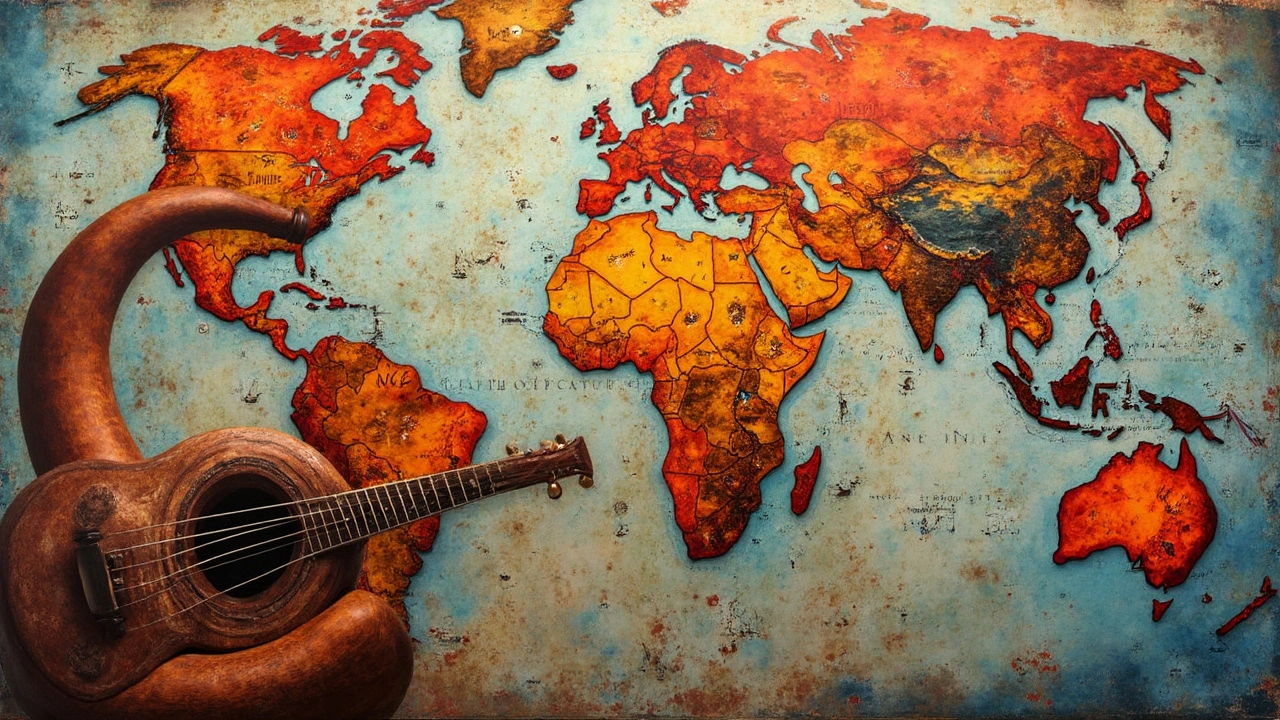Have you ever wondered how musical instruments can capture the soul of a culture? It's amazing how an instrument can evoke such deep connections to traditions and history. Think about the djembe—a drum from West Africa. It's more than just a drum; it's a storytelling tool, a communication device, and a vital part of rituals and celebrations.
Now, let's hop over to Asia, where the sitar reigns in Indian classical music. Its intricate string patterns can whisk listeners away on a melodic journey, each note painting the rich landscapes of India's heritage. But it's not just about sound; it's about emotion, tradition, and sometimes, spirituality.
Instruments like the didgeridoo have been used by Indigenous Australians for thousands of years. The deep, resonant tones are not just haunting; they connect the player and the listener to the land and its stories. These instruments aren't merely tools for making noise—they're keys to unlocking cultural understanding.
- Origins and Evolution
- Cultural Significance
- Popular Instruments Around the World
- Tips for Novice Musicians
- The Future of Traditional Instruments
Origins and Evolution
The journey of musical instruments is as fascinating as the music they produce. It's a journey that spans millennia, weaving through various cultures, and constantly evolving with time. The earliest known instruments, like simple flutes made from animal bones, date back to nearly 40,000 years ago, discovered in Germany's Swabian Jura region.
Let's take a closer look at the global music spectrum. The ancient Egyptians were brilliant in their craftsmanship and created harps and lyres, as depicted in numerous ancient murals. Fast forward to Asia, where the Chinese were developing instruments like the guqin as early as 3,000 years ago. These weren't just instruments—they were crafted to harmonize with the spiritual and natural worlds.
The Influence of Trade Routes
Instruments really started to get around thanks to bustling trade routes. The Silk Road was more than a pathway for goods; it was a highway for music. Instruments like the lute made their way west from the Middle East, evolving into the guitar, which is now a staple in Western music. Without these routes, the traditions of music might have looked very different.
Innovation Over the Ages
As societies developed, so too did their instruments. With the Renaissance came the refinement of stringed instruments, leading to the creation of the modern violin family. This era was crucial for music because it wasn't just about crafting instruments; it was about elevating music to an art form.
Table of Instruments Evolution
| Era | Notable Instrument Developments |
|---|---|
| Ancient Times | Flutes, harps, guqin |
| Middle Ages | Lute, bagpipes |
| Renaissance | Violin, harpsichord |
| 19th Century | Piano, clarinet |
| 20th Century | Electric guitar, synthesizers |
Reflect on how instruments have evolved, and it becomes clear they do more than just produce sound. They adapt, transform, and continue to be the heartbeat of music across the globe. Whether through greater ranges, electronic enhancements, or just sheer artistry in design, each generation brings something new to the table, keeping traditions alive while embracing the future.
Cultural Significance
When we talk about the cultural significance of musical instruments, it's more than just their sound. It's about the stories they tell and the history they hold. Take, for example, the Scottish bagpipes. Don't they immediately make you think of lush green hills and historic battles? They've been a symbol of Scottish heritage and pride for centuries.
Let's not forget the djembe from West Africa. It's used in ceremonies, but also in storytelling and community gatherings. Its rhythms can be both a call to unity and a celebration of life. Did you know some West African cultures believe that the drum contains spirits of their ancestors? That's a deep-rooted connection you don't find everywhere.
The Universal Language
Across continents, global music traditions often use instruments as a form of communication, transcending words. Look at the Native American flute. Its soothing tones have been used in healing practices and rituals, believed to mimic nature's music, inviting harmony and peace.
These instruments shape relationships, inspire fusion amongst cultures, and break barriers. They create a common thread that connects people globally, even if they have nothing else in common.
Preservation of Traditions
As we embrace modernity, preserving traditional instruments becomes essential. Festivals worldwide, like the Gnaoua and World Music Festival in Morocco, celebrate these instruments to ensure they aren't forgotten. Plus, many musicians blend ancient sounds with modern ones, ensuring these precious traditions endure.
There are efforts to keep these instruments alive in schools and through community workshops. Education and exposure to these tools are key in passing traditions down to younger generations, keeping the heartbeat of these cultures alive.

Popular Instruments Around the World
Diving into the realm of musical instruments is like embarking on a global adventure. Every corner of the world brings its own unique sound that merges culture with creativity. Let's explore some of these incredible sound-making tools and their cultural roots.
String Instruments: The Universal Melodists
When it comes to string instruments, the sitar in India and the guitar in Spain have left an indelible mark on their respective cultures. The sitar, with its droning strings and musical depth, captures the essence of Indian classical music. Meanwhile, the Spanish guitar is at the heart of flamenco, weaving intricate rhythms that tell stories of passion and heritage.
Did you know that the violin has found a home in everything from Western classical symphonies to Eastern European folk music? Its versatility makes it a favorite across various music traditions.
Percussion: The Beat of Life
Percussion instruments often form the backbone of musical traditions, setting the rhythm that gets feet moving. The African djembe and Latin American conga drums are iconic, yet there’s a world of percussion to explore. The maracas lend their rattle to Caribbean beats, while the tabla adds a heartbeat to Indian music.
Wind Instruments: Breathing New Life
Wind instruments have their own charm, with the flute and saxophone serenading audiences worldwide. But let's not forget about the soulful notes of the pan flute from the Andes, or the hypnotic cadence of the Australian didgeridoo, which has resonated for thousands of years.
- The didgeridoo is known for its continuous drone that represents the spirit of the land.
- The pan flute is assembled from various pipes, each contributing different notes to its mystical melodies.
Interesting Stats on Instrument Popularity
| Instrument | Region of Popularity |
|---|---|
| Guitar | Worldwide |
| Sitar | South Asia |
| Djembe | West Africa |
Instruments are not just tools for making music. They are cultural ambassadors that carry the soul of a region. Whether you're strumming a guitar in a park or participating in a traditional African drumming session, remember you're part of something much bigger—a mosaic of global music traditions.
Tips for Novice Musicians
So, you're a budding musician looking to dive into the world of musical instruments? It's an exciting journey, but like any adventure, it helps to have a map. Here's what you need to know to get started on the right note.
Choose Your Instrument Wisely
You might be drawn to the guitar for its popularity or the piano for its versatility. But go deeper—does the beat of a djembe make your heart race? Does the haunting sound of a sitar make your soul sing? Choose an instrument that resonates with you. It will make practicing more fun and rewarding.
Set Realistic Goals
Everyone would love to play like a pro overnight, but mastery takes time. Start by setting small, achievable goals. Maybe it’s learning a new chord each week or mastering a simple song by month-end.
Practice Regularly
The key to improving at any musical instrument is consistency. Set aside some time daily for practice. Even just 20 minutes can make a big difference. It's better to practice a little each day rather than trying to cram a lot in one go.
Seek Guidance
There’s no shame in being a student at any age. Look for a teacher who can offer guidance and feedback. And in today's digital age, there are tons of online tutorials that can bridge the gap if in-person lessons aren't an option.
Join a Community
Whether it's a local group or an online forum, connecting with other musicians can be invaluable. They offer advice, share experiences, and even provide motivation when you're feeling stuck.
Invest in Quality Instruments
While starting out, it's tempting to opt for the cheapest option. However, sometimes cheap instruments can be harder to play and go out of tune easily. Look for something that's within your budget but still offers good sound quality.
Explore Different Styles
Don’t box yourself into one genre. If you're learning the guitar, experiment with rock, jazz, or even classical styles. It broadens your skills and keeps things interesting.
Track Your Progress
Finally, keep track of your journey. Record your practice sessions and glance back at them from time to time. It'll show you how far you've come and help pinpoint what still needs work.
With these tips, you'll find yourself not just playing an instrument but connecting deeply with the world's global music traditions. Remember, every maestro was once a novice—it’s all about embracing the journey!

The Future of Traditional Instruments
The world might be changing fast, but traditional musical instruments are standing their ground. They've been around for centuries, and while modern music production seems to dominate, these iconic instruments are making a steadfast comeback. But what’s driving this resurgence?
Revival Through Technology
Believe it or not, technology isn't the enemy. Digital platforms have turned into allies, helping folk musicians share their global music traditions with audiences far and wide. From virtual reality performances to social media gigs, there's a growing demand for authenticity in a mass-produced world.
Educational Initiatives
Educational programs worldwide are introducing these instruments to new generations. Schools and universities offer courses that focus on traditional instruments, showing how they fit into modern ensembles. This fusion can spark interest among students, exposing them to the unique sounds and cultural significance embedded in each note.
Environmental Concerns
Interestingly, environmentalists have also entered the conversation. Some materials used in instrument making are becoming scarce. Communities are looking to sustainable practices for crafting instruments without losing the magic of their traditional sounds. For instance, bamboo and recycled materials are being used to make eco-friendly didgeridoos.
Community Engagement
Communities are taking action, too. Festivals dedicated to folk music are popping up everywhere. These events not only showcase traditional instruments but also provide poignant reminders of the role these instruments play in cultural identity. It brings people together—something we all crave lately.
Market Insights
| Year | Estimated Value of Global Traditional Instruments Market ($ billion) |
|---|---|
| 2025 | 1.2 |
| 2030 | 1.8 |
The market for traditional instruments is expected to grow, showing that there is still love and space for these instruments in modern culture. It seems we’re not in a hurry to let go of these cultural gems. Whether through tech or touch, they continue to be the heartbeat of our ever-evolving worlds.

